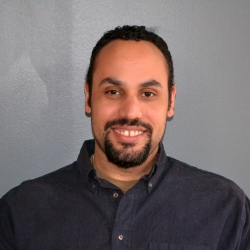Dec
13
2013

Written by Sean Thomas-Breitfeld
When I joined the BMP staff eleven months ago, it was accepted as a natural next step in my career. It certainly didn’t raise any of the awkward questions that Frances and Caroline were being peppered with. While Frances had to explain that bringing me on wasn’t part of a succession plan and Caroline had to explain that I hadn’t stolen a promotion out from under her, my decision was generally affirmed. No one second-guessed my new job because people saw the title of “Co-Director” as a bigger job than my last one; and in the job market (like the market-market) ‘bigger is better.’ But even if my new job didn’t leave anyone else with questions, I still had a lot to figure out in this new role.
As happens when stepping into an existing team, I had to learn how to do my job and get the work done; but I also had to learn all of the informal things about any organization, such as its hierarchy, office culture and work styles. Moreover, we all had to figure out exactly what a co-directorship entailed, and where the skills I was bringing to the table best fit in. The BMP team wasn’t just bringing me on as another part of the staff – they were bringing me on to help lead the organization. Contrary to the findings from our Vision for Change report, which notes that it is a bit unusual for someone from my generation to seek out an executive director-level position in an organization, I wanted to take on the challenge. Yet I was coming on to co-lead an organization with someone who had founded it nearly ten years before, and it meant that responsibilities across the staff team had to shift.
Frances and I didn’t try to pretend that we’re on equal footing in all aspects of our shared leadership. Frances founded BMP when I was starting my career, so the sheer quantity of what and who she knows always amazes me. Sure, it’s nice that she’s quick to point out that I bring unique skills and experiences to our partnership (and I do), but I’m also glad that we can be honest about our differences. For instance, Frances has years of fundraising experience, so talking to funders isn’t hard for her, but designing trainings and presentations seems to come a little easier to me. The great thing is that once we both have our roles down we rise to the occasion and play off of each other well in front of an audience – whether it’s a foundation program officer or a group of organizational development consultants.
Acknowledging our experience and generational gaps doesn’t undermine our co-directorship. We have worked with a coach to help us think strategically about how to develop our own unique model of shared leadership, based on the different, but complementary, experience, skills and interests that each of us bring. I hope other organizations experiment with their own models of shared leadership, because the co-director title is not enchanted. The magic is in the team dynamics and relationships between colleagues that makes collaboration effective, impactful and fun.


One thought on “On Learning How to Co-Lead”
Comments are closed.